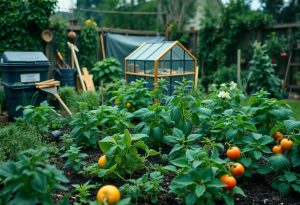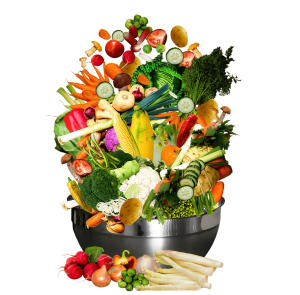How do we preserve food at home sustainably? It’s a question more and more of us are asking as we grow increasingly aware of our environmental footprint and our role in creating a sustainable future. Preserving food not only helps us reduce waste but also ensures that we have access to nutritious and delicious options year-round. In this article, we’ll dive deep into various methods and tips for doing just that.
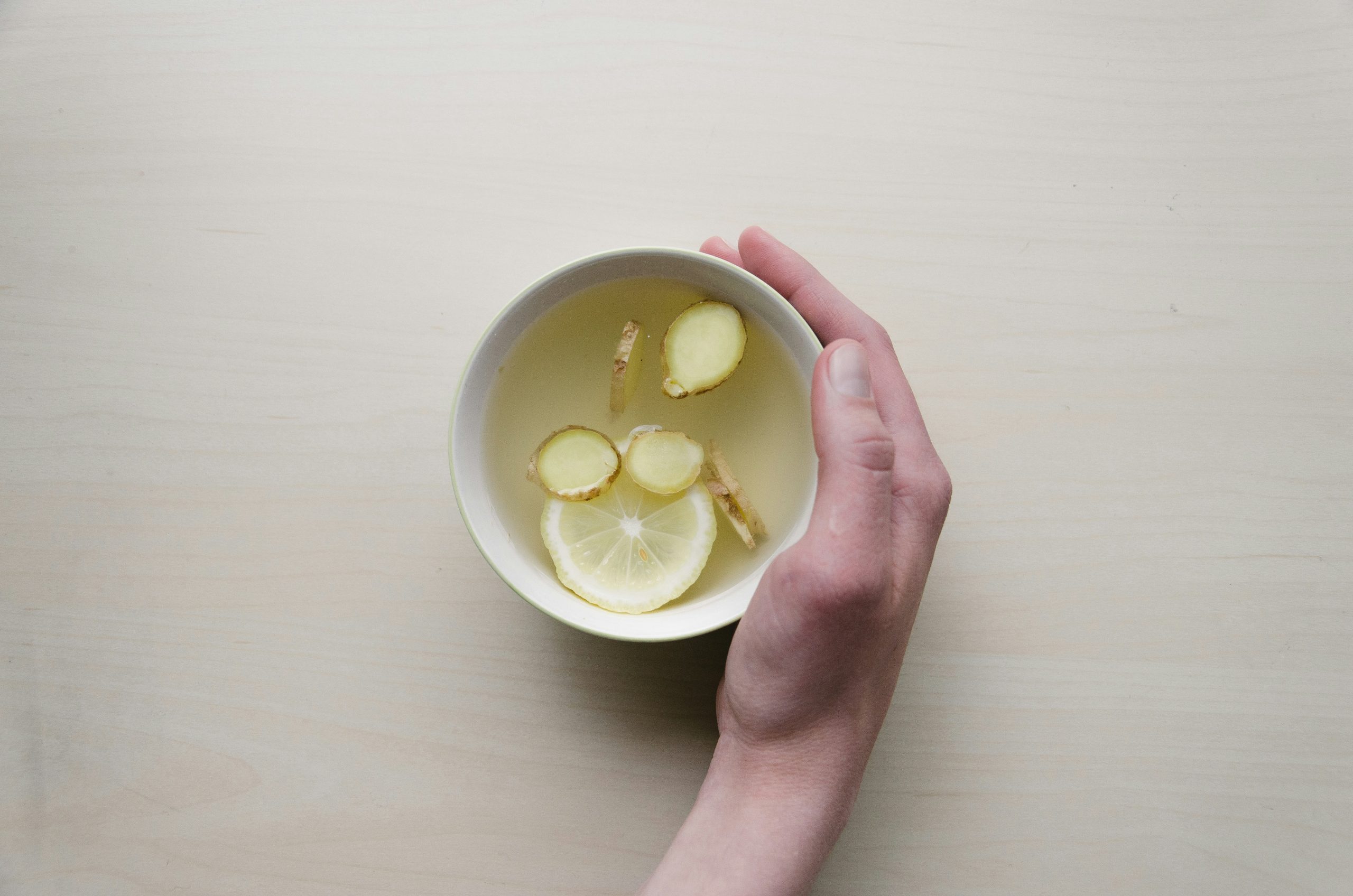
The Importance of Sustainable Food Preservation
Before we explore the nuts and bolts of food preservation, it’s essential to understand why it matters. Sustainable food preservation isn’t just about keeping our food fresh; it’s about reducing our waste, minimizing our carbon footprint, and promoting a healthier planet. When we waste less food, we buy less, grow less, and ultimately, burden our natural resources less. It’s a win-win for us and the environment.
Traditional Methods of Food Preservation
Canning
Canning is one of the most time-tested and effective methods for preserving food. By canning, we can enjoy our garden’s bounty long after the growing season has ended. Here’s a quick rundown of how it works:
Prepare your jars and lids by sterilizing them.
Fill the jars with food, leaving some headspace (usually about an inch) to allow for expansion.
Seal the jars and process them in a boiling water bath or a pressure canner, depending on the acidity of the food.
By following these steps, we lock in nutrients and flavor, allowing us to enjoy our favorite produce throughout the year.
Fermenting
Fermentation is another ancient preservation technique. Fermenting not only extends the life of our food but also adds beneficial probiotics to our diets. This method works particularly well with vegetables like cabbage (think sauerkraut) and cucumbers (pickles). Here’s a simplified process:
Chop or grate the vegetables and mix them with salt.
Pack the mixture tightly into a fermentation vessel, ensuring the vegetables are submerged in their own juices.
Allow the mixture to ferment at room temperature for a period (ranging from days to weeks, depending on the recipe).
The result is a tangy, nutritious, and long-lasting product that adds zest to our meals.
Drying
Drying food is another effective way to preserve it. By removing moisture, we prevent the growth of bacteria, mold, and yeast. This method is particularly suitable for fruits, vegetables, and herbs. We can use an oven, a dehydrator, or simply let the sun do the work. Here’s a basic approach:
Slice the food evenly to ensure it dries uniformly.
Spread it out on drying racks, making sure the pieces don’t overlap.
Dry at a low temperature until the food is leathery and brittle (for herbs, this could be as little as a few hours).
Pickling
Pickling is both simple and flavorful. To pickle food is to preserve it in an acidic solution, usually vinegar. It works well for cucumbers, beets, and even eggs. Here’s a basic pickling process:
Prepare a pickling solution by combining vinegar, water, and salt (you can also add spices like dill, garlic, or mustard seeds).
Submerge the food in the prepared liquid.
Seal it in jars and let it sit in the refrigerator or a cool, dark place.
Pickling lends a unique taste to our food while preserving it for months.
Modern Methods of Food Preservation
Freezing
Freezing is perhaps the most convenient method of modern food preservation. Here’s how we can do it effectively:
Wash and dry the food thoroughly.
Blanch vegetables briefly in boiling water to kill bacteria and enzymes.
Cool the food rapidly in ice water.
Pack it in airtight containers or freezer bags, removing as much air as possible.
Freezing maintains the nutritional content of our food better than most other methods.
Vacuum Sealing
Vacuum sealing, often paired with freezing, can dramatically extend the shelf life of our food. By removing air from the package, we slow down the oxidation and growth of microorganisms. Here’s a quick look:
Place the food in a special vacuum-seal bag.
Use a vacuum sealer to remove the air and create a tight seal.
Using this method, we can safely store meats, cheeses, and even fruits and vegetables for months.
Cold Storage
Cold storage, like basement root cellars or specially designed refrigerators, is another effective preservation method. Certain fruits and vegetables, like potatoes, apples, and cabbages, store well under cool, dark, and slightly humid conditions. Here’s a simple guide:
Keep storage areas clean and free from pests.
Maintain a consistent temperature just above freezing and moderate humidity.
Use shelving that allows for good air circulation.
Cold storage helps us keep fresh produce longer without the need for chemical preservatives.
Tips for Effective and Sustainable Food Preservation
Use Local and Seasonal Produce
Preserving local and seasonal produce not only supports local farmers but also provides us with the freshest, most nutrient-dense food. Local produce, in season, requires fewer resources to grow and transport, making it a more sustainable choice.
Reduce Waste
Utilizing every part of the produce is key to reducing waste. For example, we can use vegetable scraps to make broth or turn fruit peels into zest or candy. By being innovative in the kitchen, we can minimize waste dramatically.
Proper Storage Techniques
When preserving food, the right storage techniques make all the difference. Ensure we store food in a cool, dark, and dry place, and regularly check for spoilage. Rotating our stock also ensures older items are used first, reducing the likelihood of waste.
Use Natural Preservatives
Whenever possible, opt for natural preservatives like salt, vinegar, or citric acid instead of artificial additives. These not only maintain the integrity of our food but also promote better health for us and the planet.
Composting
Even with the best preservation methods, some food waste is inevitable. Composting is a sustainable way to deal with leftovers and scraps, turning them into nutrient-rich soil. This practice not only reduces waste but also enriches our gardens, creating a closed-loop system.
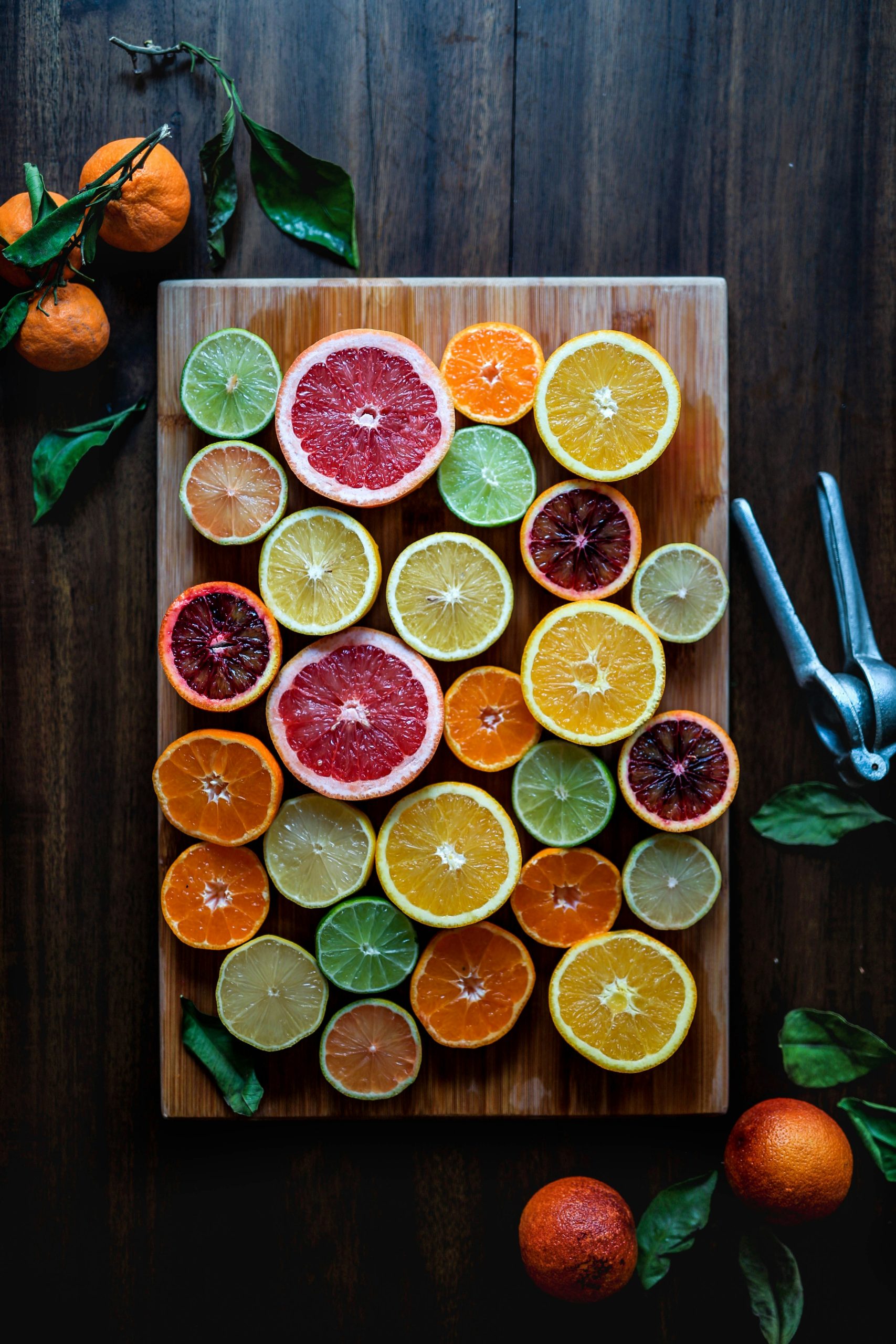
Common Challenges and Solutions
Avoiding Cross-Contamination
Cross-contamination can spoil preserved food, making it unsafe to eat. To prevent this, we should always use clean utensils and containers, wash hands thoroughly, and keep raw and cooked foods separate.
Managing Space
Effective food preservation can quickly take up a lot of room. To manage this, we can:
Use stackable containers and jars.
Opt for space-efficient preservation methods like drying.
Regularly evaluate what we have stored and use up older items first.
Time Management
Preserving food can be time-consuming, but planning can help. Set aside specific days for preserving activities and consider involving family members or friends. Sharing the workload makes the process more enjoyable and efficient.
Learning and Improving
Like any skill, mastering food preservation takes practice. Don’t be discouraged by initial setbacks. Keep learning, experimenting, and refining our methods. Joining local food preservation workshops or online communities can offer support and inspiration.
Environmental Impact of Food Waste
Understanding the environmental impact of food waste highlights the importance of sustainable food preservation. When food rots in landfills, it produces methane, a potent greenhouse gas contributing to climate change. By preserving food effectively, we reduce our contribution to this problem.
By committing to sustainable food preservation, we not only ensure a steady supply of food for ourselves but also contribute positively to our environment. Let’s take this knowledge and start preserving, one jar and one season at a time.

Financial Benefits of Preserving Food at Home
Not only is preserving food at home good for the environment, but it’s also kind to our wallets. Here are some of the financial benefits we can enjoy:
Reduction in Grocery Bills: By preserving food when it’s abundant and cheaper, we can save money. For instance, buying produce in bulk during peak harvest season and preserving it can equate to significant savings.
Less Dining Out: Having healthy, ready-to-eat preserved food on hand reduces the temptation to eat out, which further saves money.
Waste Reduction: Less food wastage means more of our grocery budget goes to food we actually consume, stretching our dollars further.
FAQ on Sustainable Food Preservation
How long can preserved food last?
The longevity of preserved food depends on the method used:
| Preservation Method | Shelf Life |
|---|---|
| Canned Food | 1-5 years, depending on the recipe |
| Fermented Food | 6 months – 1 year, when refrigerated |
| Dried Food | 6 months – 1 year, when stored properly |
| Pickled Food | 1-2 years, when sealed in jars |
| Frozen Food | Several months to 1 year, depending on food |
| Vacuum-Sealed Food | 1-3 years, when combined with freezing |
| Cold Storage | Varies; can last several months for some items |
Is it safe to preserve food at home?
Yes, it’s safe if done correctly. Following reputable recipes, sterilizing equipment, and adhering to recommended processing times and temperatures ensures the food remains safe to consume.
Can I preserve food without special equipment?
Absolutely. Many methods, like drying and fermenting, require minimal special equipment. A simple mason jar can be used for both fermenting and canning.
What are some common mistakes to avoid?
Avoid underprocessing food, using improper storage containers, and neglecting to check preserved food for spoilage regularly. Always follow tested recipes and guidelines.
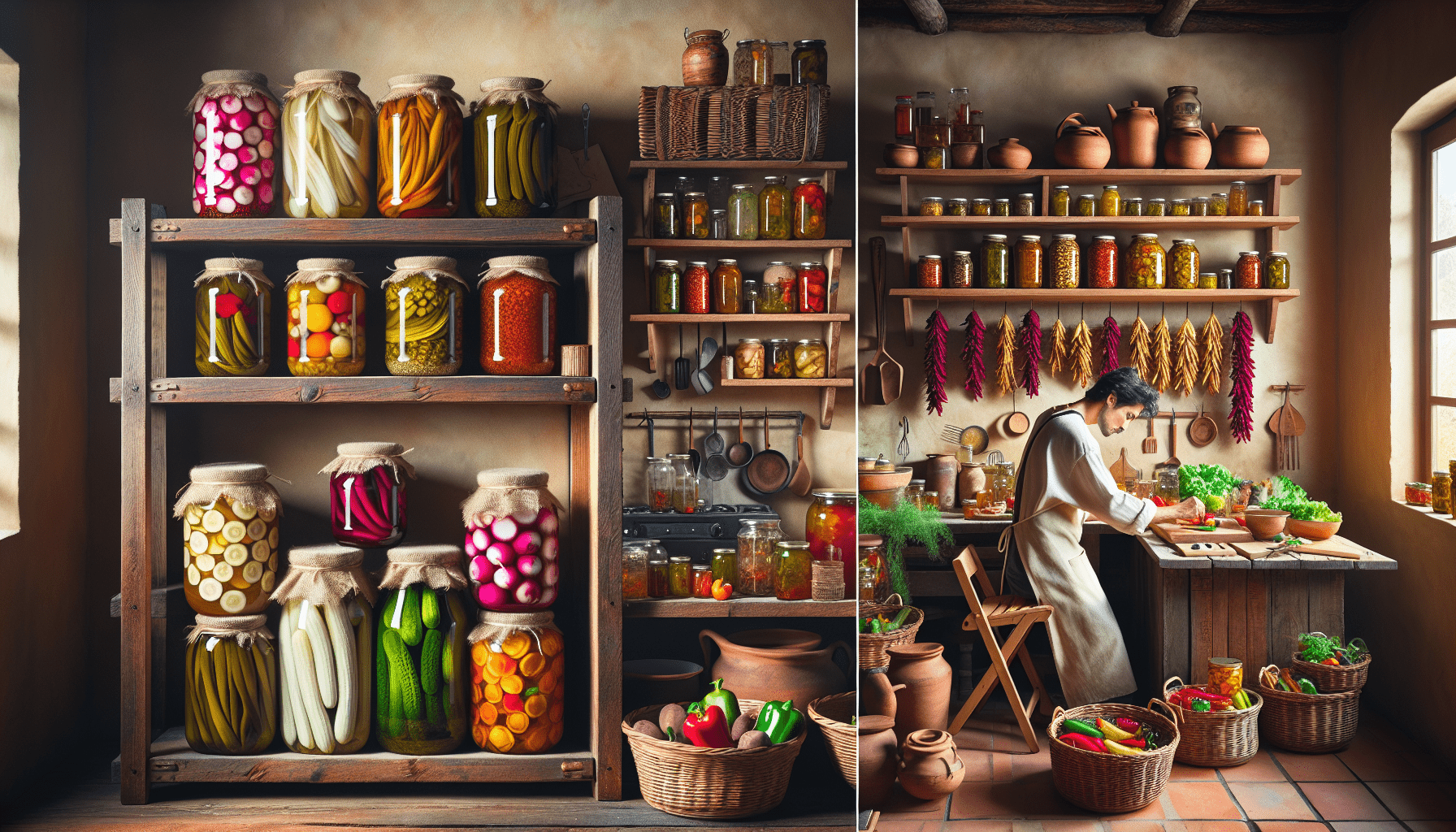
Learning More About Food Preservation
To deepen our knowledge, numerous books, websites, and community workshops are available. Reading materials such as “The Ball Complete Book of Home Preserving” and “Wild Fermentation” by Sandor Katz offer comprehensive guides.
Community workshops often provide hands-on experience, and local cooperative extension offices usually offer resources and classes on home food preservation.
Final Thoughts
Food preservation is an art and a science, bridging the gap between old-world traditions and modern sustainability practices. As we embrace sustainable food preservation, we’re not just storing food; we’re preserving culture, flavor, and a connection to the earth and our community. This practice empowers us to make a tangible impact on our environmental footprint and financial well-being. So let’s get started and reap the benefits of preserving food sustainably at home, one step at a time.

